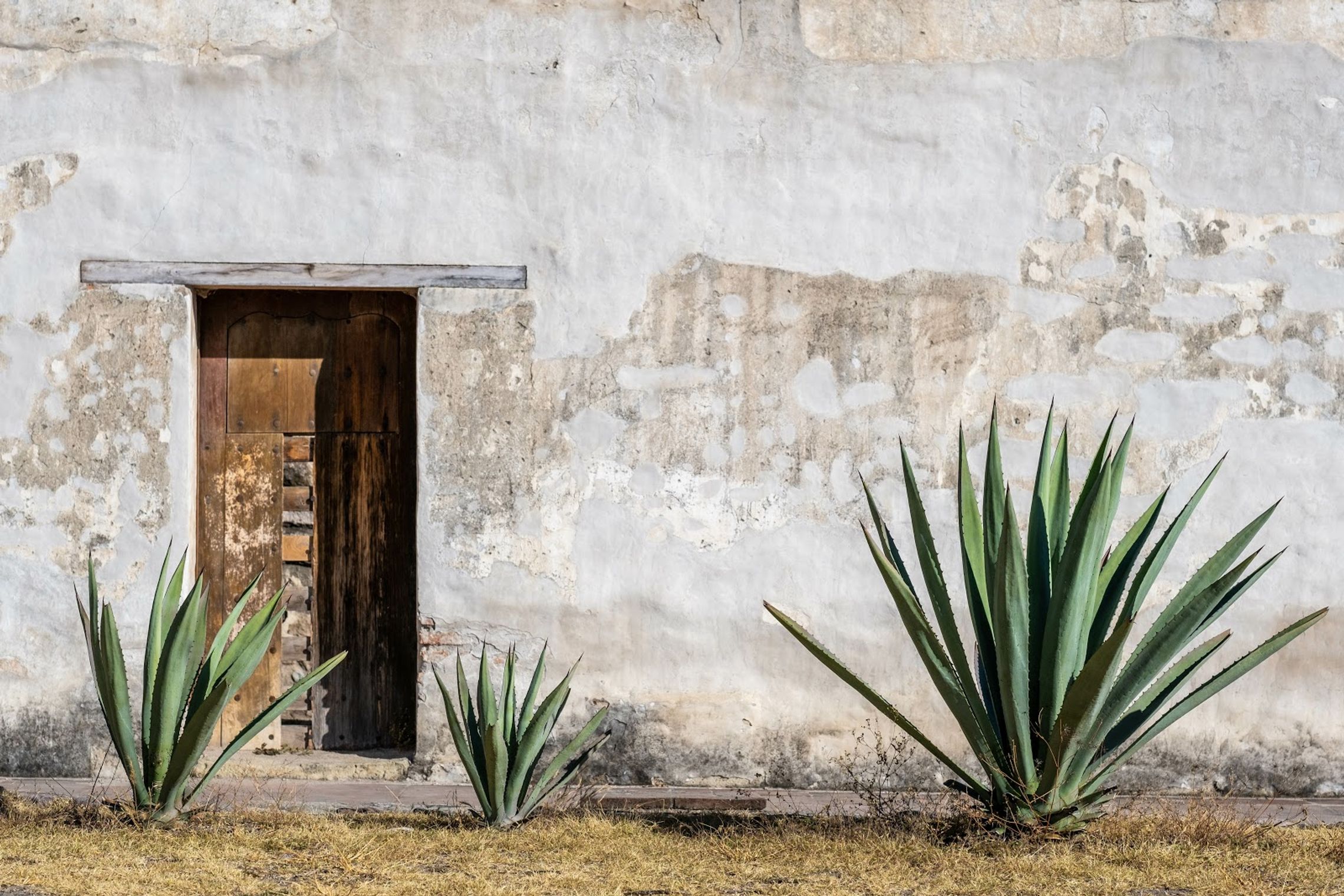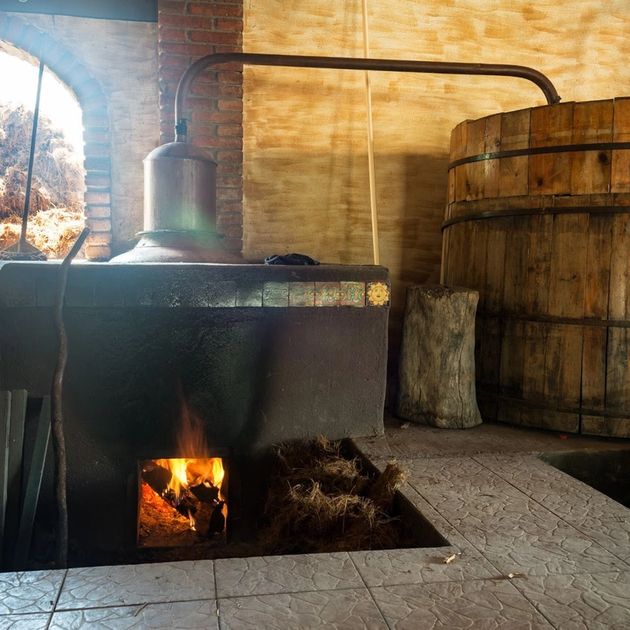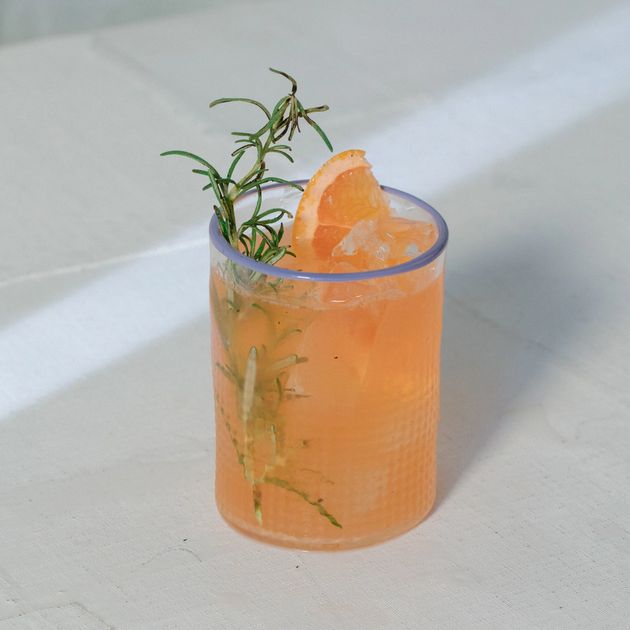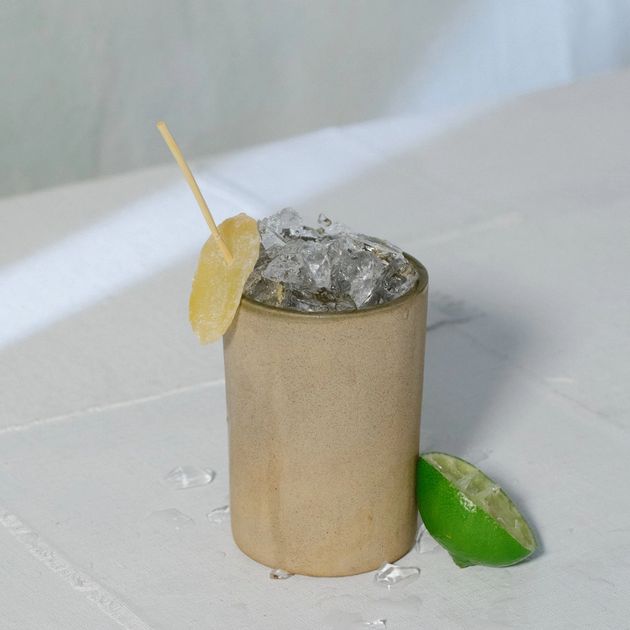Well, both Mezcal and tequila come from Mexico. And yet again, these spirits are very different from one another. Specific location does matter, and more than you might think. Pay close attention because this is a fun little snippet of worldly knowledge that you’ll want to bring up the next time you’re drinking Mezcal margaritas with your friends at happy hour.
Where in Mexico does Mezcal come from? Mezcal comes from nine different regions. But let’s back up a bit first—the history and background are actually pretty cool to know, too.
What Kind of Agave Is in Mezcal?
Fun fact: there are over 200 known varieties of agave. Not all of them can be turned into alcohol unfortunately, but it’s a #funfact nonetheless.
Out of these 200 or so agave species, Mezcal is made from upwards of 30 of them. This may seem limited, but 30/200 is so much more than Mezcal's cousin, tequila. Tequila can only be made from one type of agave: blue weber agave. Being compatible with so many kinds of agave is what allows Mezcal to have such a wonderful array of variations.
Psst, another little fun fact: tequila is a type of Mezcal. Yep, you heard that right. Every single tequila out there is considered a Mezcal. Mezcal is defined as any agave-based liquor, which (last time we checked) is every type of tequila, too. It’s the same concept as how scotch and bourbon are considered types of whiskey.
The most common types of agave used for Mezcal are tobalá, tobaziche, tepeztate, arroqueño and espadín. Espadín is the most common and is used for close to 90% of all Mezcal production. But don’t expect 90% of Mezcals to taste the same—Espadín is hugely versatile and will taste different from brand to brand and region to region.
Our Mezcal Rosaluna is made with agave espadín grown right on our family farm in Santiago Matalán, a small village in Oaxaca. The state of Oaxaca has arguably the best terroir for making Mezcal, but more on that later.
Terroir: It’s Just the Location
Location, location, location. You hear this phrase in the business and real estate context, but Mezcal means serious business, too.
The notion of “terroir” is probably one of the most used, yet it’s still the least understood. The French word “terroir” roughly translates to “sense of place,” which is actually a pretty good definition. Some significant traits that make up terroir are climate, sunlight, soil, and terrain.
Agave is native to places like Mexico and the southern United States, where hot and desert-like conditions make the perfect environment for this succulent-like plant. Their favorite habitat is in Mexico’s volcanic soils, where local communities have treasured this plant for thousands of years.
Just like with wine varietals, agave carries with it the characteristics of the terroir it is grown in. Agave from different regions will bring a unique flavor profile. The soil, how the agaves were cared for, and the distillation process will also affect the final flavor.
Lowland climates with slightly warmer volcanic soils produce agaves with a more herbaceous, earthy, and vegetative essence. Highland environments with slightly cooler conditions create a terrain rich in minerals, which yields physically larger agave plants with sweeter, fruity characteristics.
This is probably starting to sound very familiar to what we know about terroir and wines. Except a big difference is how much longer agaves take to mature. Given agave is grown for seven to ten years before harvesting, the terroir in which it grows will heavily influence the taste it carries with it.
On our Rosaluna farm, we constantly hand-clean our baby agaves as they grow and maintain fresh soil all around them. These extra steps take more time and effort, but they’re what gives our Mezcal its special earthy notes (and notes of love) later in the process.
And when it comes to distilling? Espadín agave, for example, tends to absorb more smoke during distillation than other agaves. This results in a deep, smoky essence and more of a charred aspect to the final spirit.
Our agaves are grown and distilled in the magical and mountainous hills of Oaxaca. Specifically, our entire (100% vertically integrated) Mezcal process happens on our family farm, nestled between two towering mountains in the small village of Santiago, Matalán. Oh, which also happens to be known as “The World Capital of Mezcal...” BTW.
Denomination of Origin? What’s That?
Denomination of Origin (DO) recognizes that only products made in specified regions of Mexico are allowed to be called “Mezcal.” It’s kind of like quality control.
Denomination of origin also regulates production, certification, classification, labeling, and just about everything else, too. This DO standard satisfies all requirements necessary for producing nothing but top-of-the-line agave—just the way we like it.
Region-wise, the number one requirement for Mezcal-making-compatibility is that the agave must have enough natural sugars for distillation later in the production process. This is directly related to terroir, which we just went over.
Remember how we said Mezcal comes from nine different places in Mexico? These nine states are Durango, Guerrero, Guanajuato, Michoacán, Oaxaca, Puebla, San Luis Potosí, Tamaulipas and Zacatecas. These regions are within the domination of origin for Mezcal, yet each of these regions still produces Mezcal with slightly different flavor profiles that distinguish them.
Ancestral Vs. Traditional: Does Location Matter?
The differences between ancestral Mezcal and traditional Mezcal are all about the production process. Knowing just this, it would make sense to then think that location doesn’t matter. Except, the production process of Mezcal usually happens in the same place that the agaves were grown. In other words, agave isn’t typically grown in place X, and then transported to place Y for production.
Hold on—we need to back-track a few steps and get some context. In Mexico, Mezcal is more than just liquor. Mezcal is deeply rooted in the country’s cultural traditions and carries distinct and significant meanings within smaller communities. Just like language, clothing, and cuisine, Mezcal has embedded itself in regional rituals. Mezcals are made for the communities they’re produced in, and in doing so, they capture the identity of each. Some communities have remained more traditional than others.
Traditional and Artesenal Mezcal sticks to its roots: it’s made from agave free of fertilizers or artificial additives and it uses only underground pit ovens and natural fermentation. Plus, it’s never made on an industrial scale.
So far, we’ve learned that 1) the location the agave was grown in matters and 2) different locations in Mexico will use different production processes, depending on the traditions (or lack thereof) of the community.
So does location matter when we’re looking at ancestral vs. traditional Mezcal? Yes, just in different ways than one might think.
Where’s Your Best Mezcal Friend from?
Our best Mezcal friend is from “The World Capital of Mezcal,” because why settle for anything less?
As a default, though, when choosing the right Mezcal, seeing a “made in Mexico” label should always be the first criteria. Mezcal labels should also always have a NOM number on them. This NOM number will identify the exact distillery that produced the spirit. Wondering about the bottle that’s sitting in your cupboard? A quick Google search should do just the trick.
While we’re on the topic of best friend requirements, we happen to have a few more. Let’s talk about the ingredient list. Here’s the thing, a good Mezcal’s ingredient list should be more like a sentence than an actual list. Remember how Mezcal is required to be 100% agave? Yeah so, that doesn’t leave room for much else.
Here at Rosaluna, our Mezcal is made from just three simple ingredients: agave, water, and a whole lot of love. It’s this very beautiful, very simple ingredient list that gives Mezcal its rep as the “healthier” choice over tequila. Calling any kind of alcohol “healthy” is a bit of a stretch (in our honest opinion), but Mezcal is, in fact, widely accepted as cleaner and purer than tequila. And hey, if Mezcal leaves you feeling better the next day, we see no problem.
We’ll always hype up all of our Mezcal friends, but if we’re honest, Mezcal Rosaluna is the real MVP.
Our Mezcal Rosaluna brings three unique, complex, and exciting flavor profiles. Earthy agave: roasted agave hearts and their delicious caramel notes lead the way, while spices like ginger and cinnamon are woven throughout. Complex aroma: with notes of citrus, tropical fruits, pineapple, and pear, it’s an experience of bright notes that everyone can enjoy. Smooth finish: leading with a hint of agave smoke, it finishes with subtle layers of sweet fruit and baking spice.
Rosaluna is a hug after a long day, a dance under the moonlight, and everything in between. There’s something about its long history and true simplicity that just feels right. Agave, water, and lots of love—that’s all you need.
Sources:
How Many Varieties of Agave Can Be Used to Make Mezcal? (Take 2) | Mezcal PhD
Learn About Terroir | Understanding Terroir | Wine 101 | Vine Pair
Mezcal Brands, Distilleries, and NOMs | Mezcal Reviews
Why Mezcal is the Alcohol of Choice for the Wellness Movement | Bon Appetit







